Periods—or full stops, as they’re called in British English—are the most common type of punctuation. Even though they’re used in a couple of different ways, their main task is very simple: to show you where a sentence ends.
To avoid any errors in your writing, here is how to use periods correctly:
1. Full Sentences
Whenever you have a complete sentence, a period is used to show where it ends.
The match was cancelled because of the weather. A lot of fans were disappointed, but that’s the trouble with outdoor sports.
Always make sure that what you’ve written is a full sentence. This means that it needs to have at least one main clause (a subject with a predicate). When read together, these should convey a complete thought:
Lucy wore her new skirt.
Paul learned how to play the piano.
The man wept.
2. Abbreviations
Although styles differ around the world, and even from one publication to another, the use of periods to mark abbreviations is more common in American English than it is in British English.
When an abbreviation is formed using the first letters of a phrase (such as HIV for “human immunodeficiency virus”), it is preferred not to separate the letters with a period (such as H.I.V.). Removing the periods provides a much cleaner and more modern look: HIV.
Even so, it is still common practice in American English to use periods with the abbreviation of “United States.” As a result, you will usually see it spelled “U.S.” in American media.
In comparison, “US” is the more common spelling in British English. This is simply a matter of style and often comes down to a publication’s own preference. It can also be a convention of the entity itself, such as NATO for North Atlantic Treaty Organization.
Of course, there are plenty of abbreviations that always take a period between their letters. The most common ones are e.g., i.e., a.m., p.m., etc., and (most often seen in academic and formal writing) et al.
There is one important rule that you need to learn when it comes to using either American or British English to write an abbreviation. In American English, the rule is easy: whenever a word is shortened, you indicate this with a period. For example, the abbreviated form of “mister” is “Mr.” and the abbreviated form of “professor” would be “prof.”
In British English, this rule is a bit more complicated. If the end of a word is missing (like we see with “prof.”), then a period is used to illustrate this. However, if only the middle of the word has been taken away and the last letter is still there (like “Mr” for “mister”), then no period is used at all.
Here are some examples to show you the difference:
American English
Mr. Jones / Mrs. Lewis / Dr. Ryan / Prof. Burke / etc.
British English
Mr Jones / Mrs Lewis / Dr Ryan / Prof. Burke / etc.
Note: If a sentence ends with an abbreviation that already uses a period (like “etc.”), then you mustn’t add another one.
My friend teaches at a university and all his students call him Prof.
Adding a second period to the end of this sentence would be wrong:
* My friend teaches at a university and all his students call him Prof..
This rule is the same for sentences that end with either an exclamation mark or a question mark. You don’t add a period to them:
I don’t believe it!
* I don’t believe it!.
Is that really true?
* Is that really true?.
3. Parentheses
There is sometimes a bit of confusion about how to punctuate a sentence that uses a pair of parentheses (also known as round brackets). Luckily, the rule is simple and easy to learn.
When parentheses are used during a sentence, then the period comes at the very end of the entire sentence, just like it always does.
My best friend (who moved to Spain a year ago) asked me when I’ll come to visit.
I want to go on holiday this year (somewhere sunny would be nice).
However, if the parentheses are placed immediately after a period, then you have to use a full sentence inside those parentheses and end it with a period. (Note that no period is placed on the outside.) Here’s an example to help make this clearer:
I worked until an old age. (In retrospect, I wish I had retired a bit younger in order to spend more time with my family.) It really took a toll on my health.
As you can see in the sentence above, the parentheses come after a complete sentence that is marked with a period. That is why the sentence inside the parentheses is marked with its own a period: it needs to stand by itself in a self-contained way.
The following punctuation, with the period placed after the closing parenthesis, is incorrect:
* I worked until an old age. (In retrospect, I wish I had retired a bit younger in order to spend more time with my family). It really took a toll on my health.
4. Quotation Marks
There are many small differences between American English and British English. In American English, the rule for punctuating a sentence that ends with a quotation mark is very simple: always put the period inside the adjacent closing quotation mark.
American English
According to the news, the president was “frustrated by the outcome.”
According to the news, “The president was frustrated by the outcome.”
“What I meant,” said John, “is that the system itself is unfair.”
In British English, if what you’re quoting is a complete sentence, then the rule is the same as American English: you place the period just before the closing quotation mark. However, if the quote is only part of the full sentence, then the period (or comma) is instead placed after the closing quotation mark.
British English
According to the news, the president was ‘frustrated by the outcome’.
– In this example, the quoted material is only part of the full sentence, so the period comes after the closing quotation mark.
According to the news, ‘The president was frustrated by the outcome.’
– Here, the quote itself is a full sentence, so the period is placed before the closing quotation mark.
‘What I meant,’ said John, ‘is that the system itself is unfair.’
Notice that the commas and period above are positioned the same way as they are in the example for American English. This is because the convention for writing dialogue is the same for both varieties of English: the period is placed before the closing quotation mark.
5. Spacing
Unless the house style that you’re using specifies otherwise, periods should be followed by a single space.
The practice of adding two spaces between each sentence is from the bygone days of typewriters. These days, the vast majority of styles prefer you to avoid it in your writing.
For more help with your grammar, check out these fantastic books:
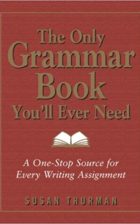
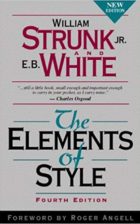
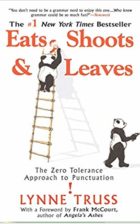


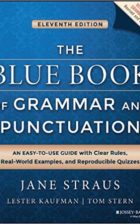

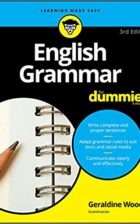

Is it all punctuation marks that go inside the closing quotation mark (if they’re next to each other), or is it just periods and commas?
Hi Mark,
It’s only periods and commas that get moved inside adjacent closing quotation marks. Other punctuation (like colons, semicolons, and dashes) are kept outside the closing quotation mark if they aren’t part of the quoted material.